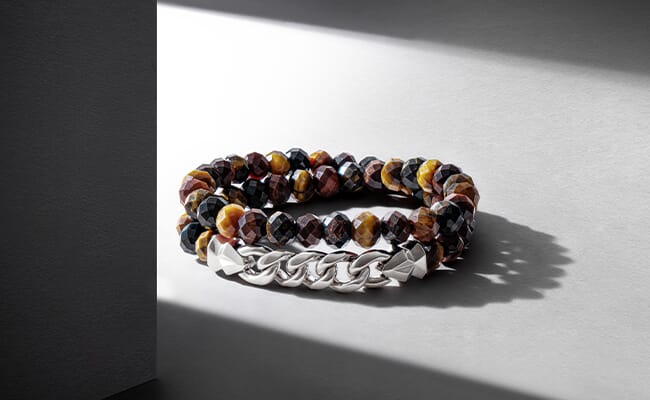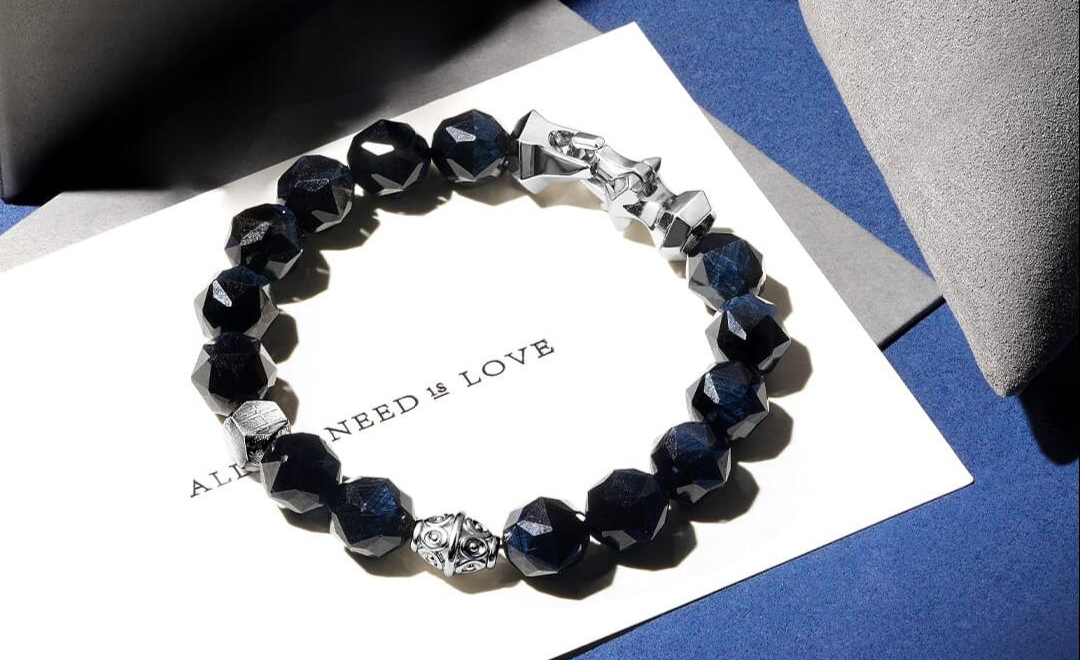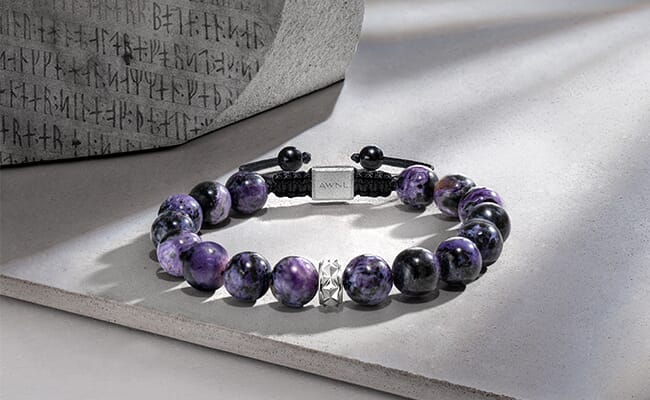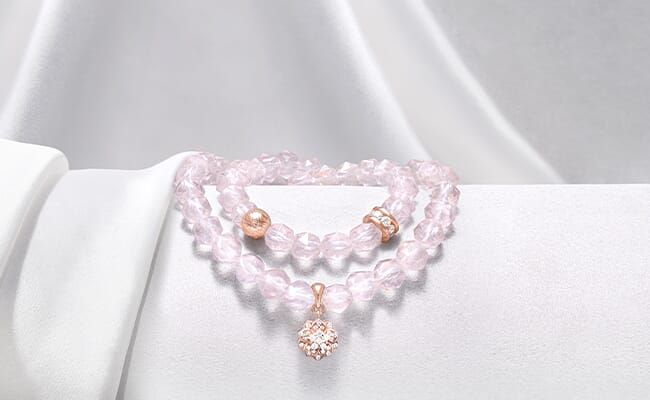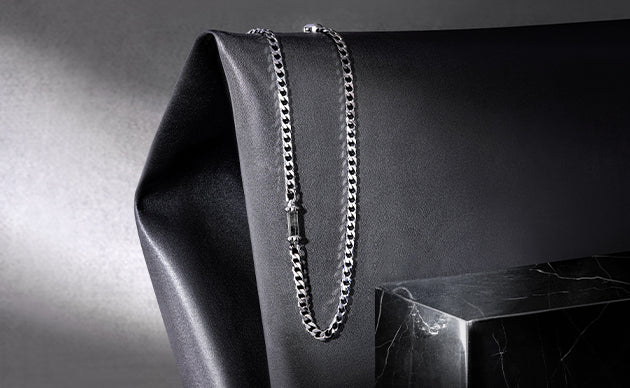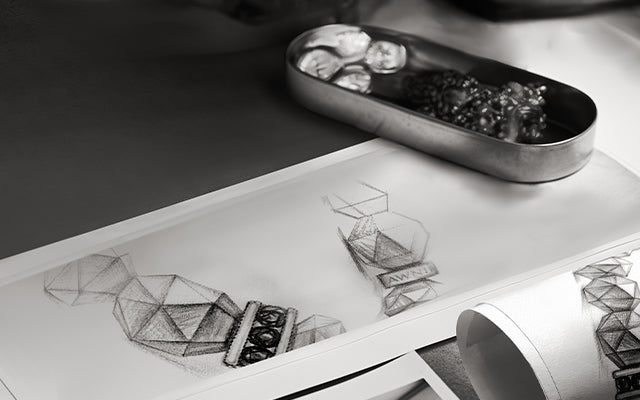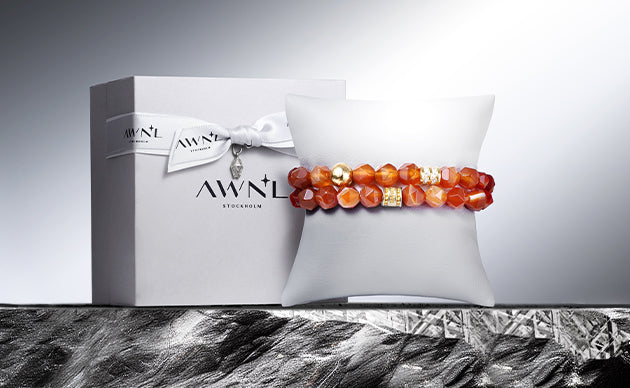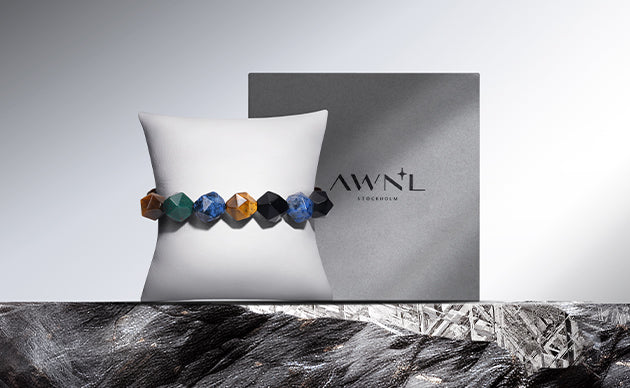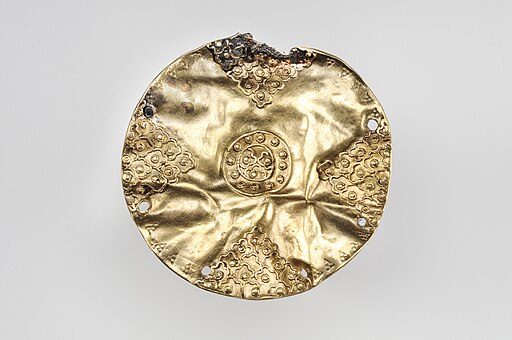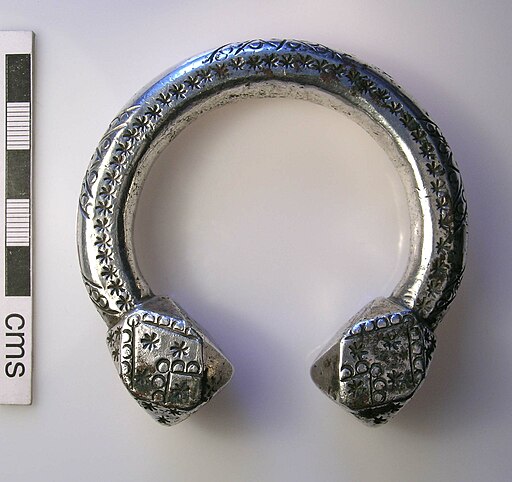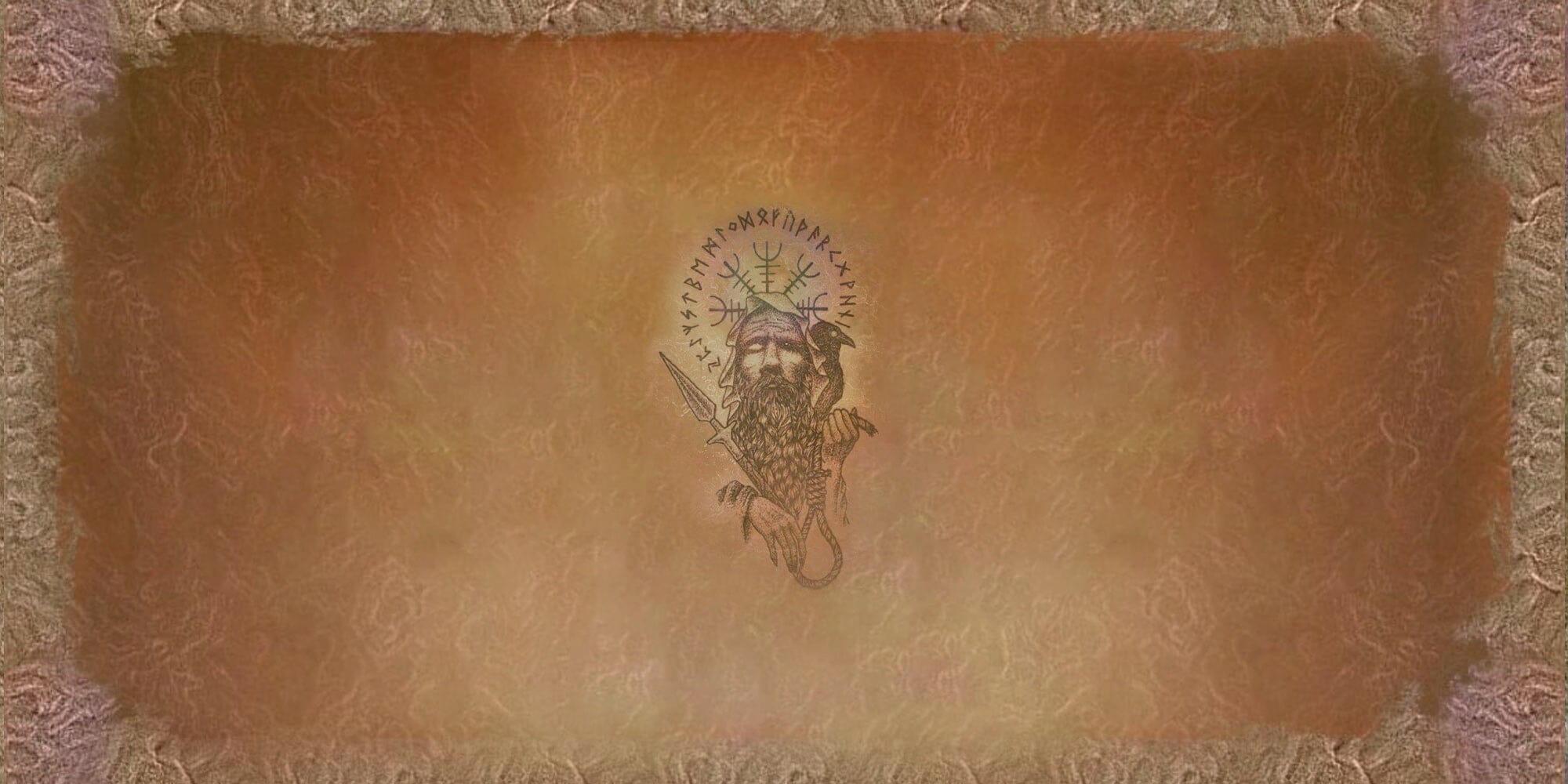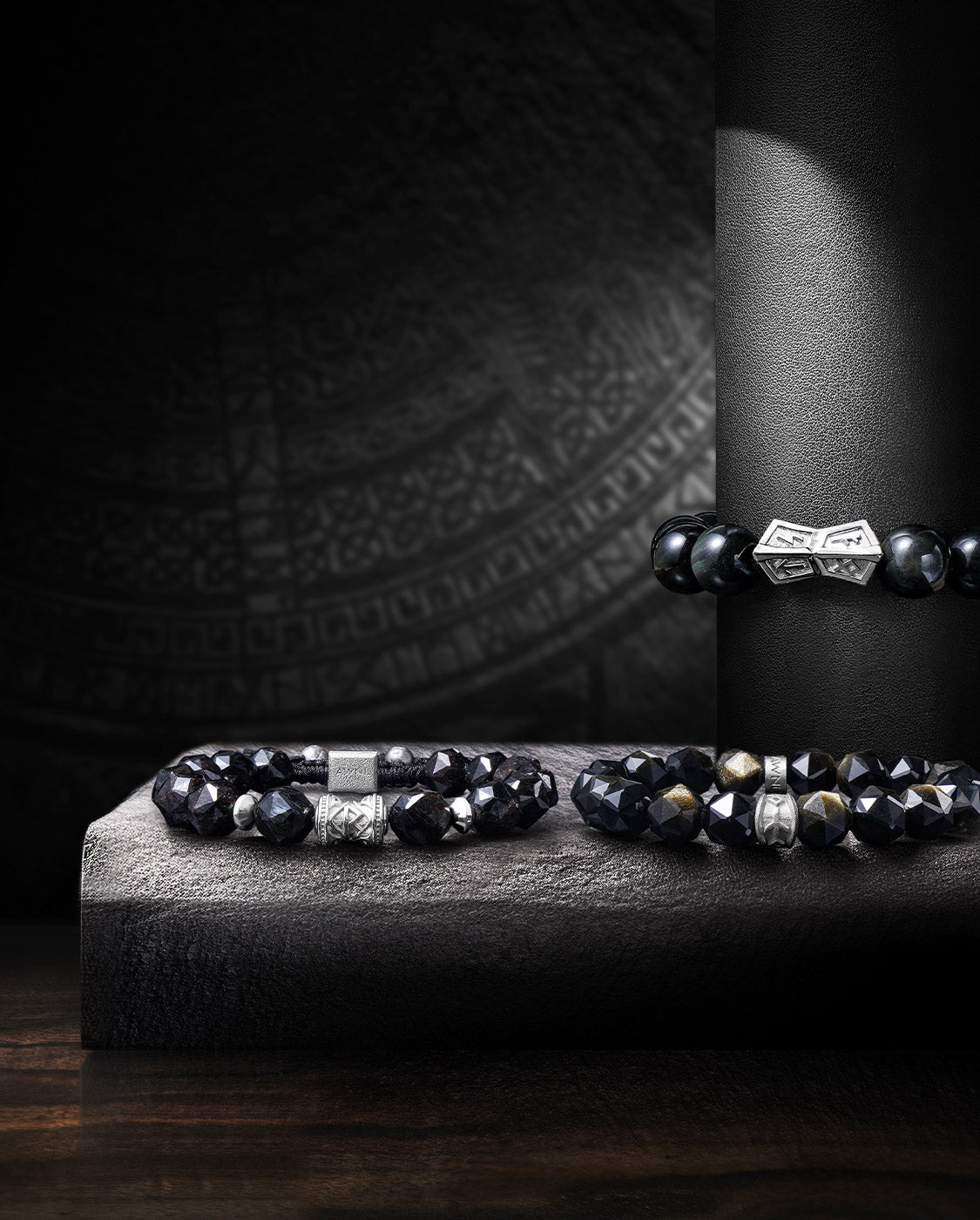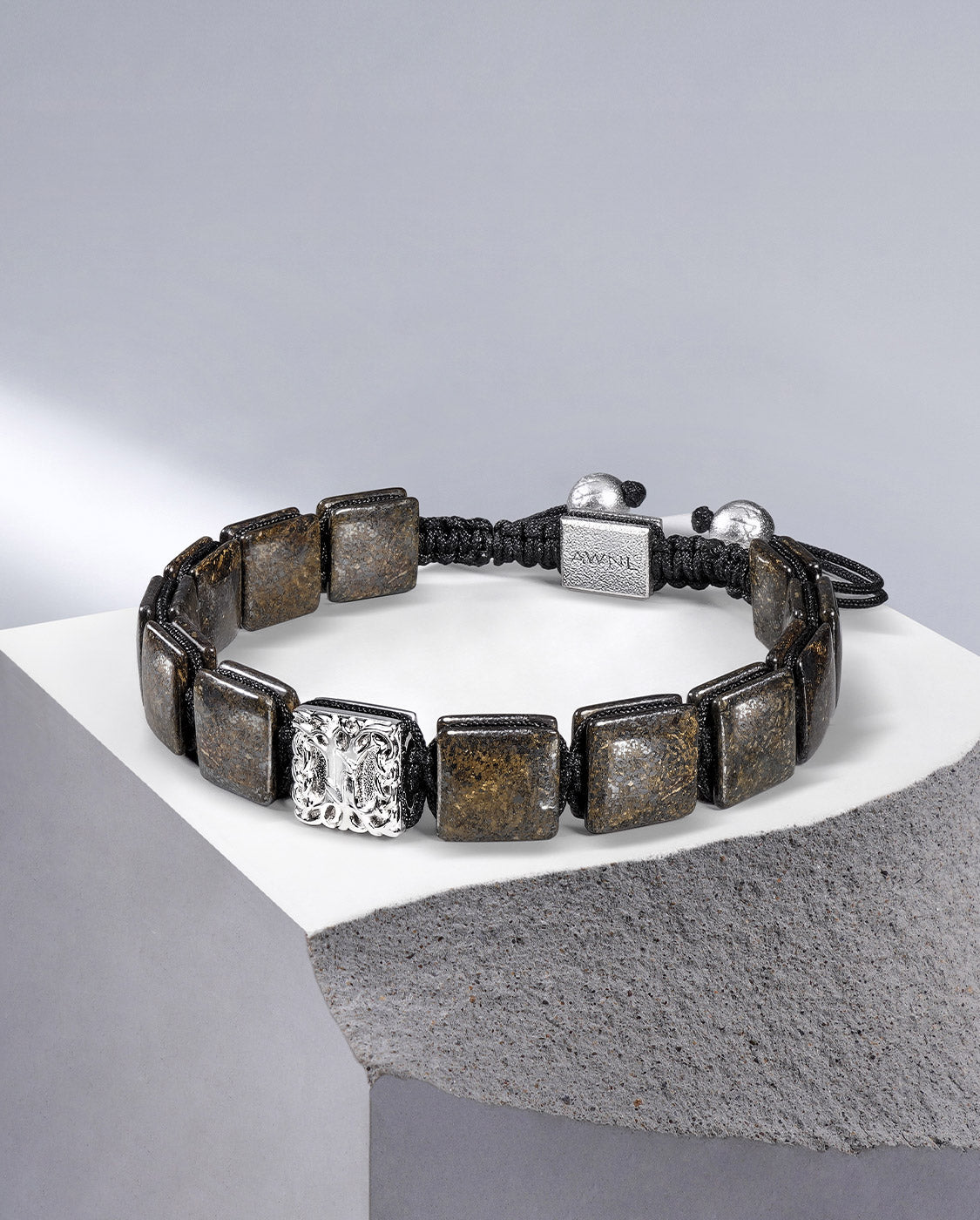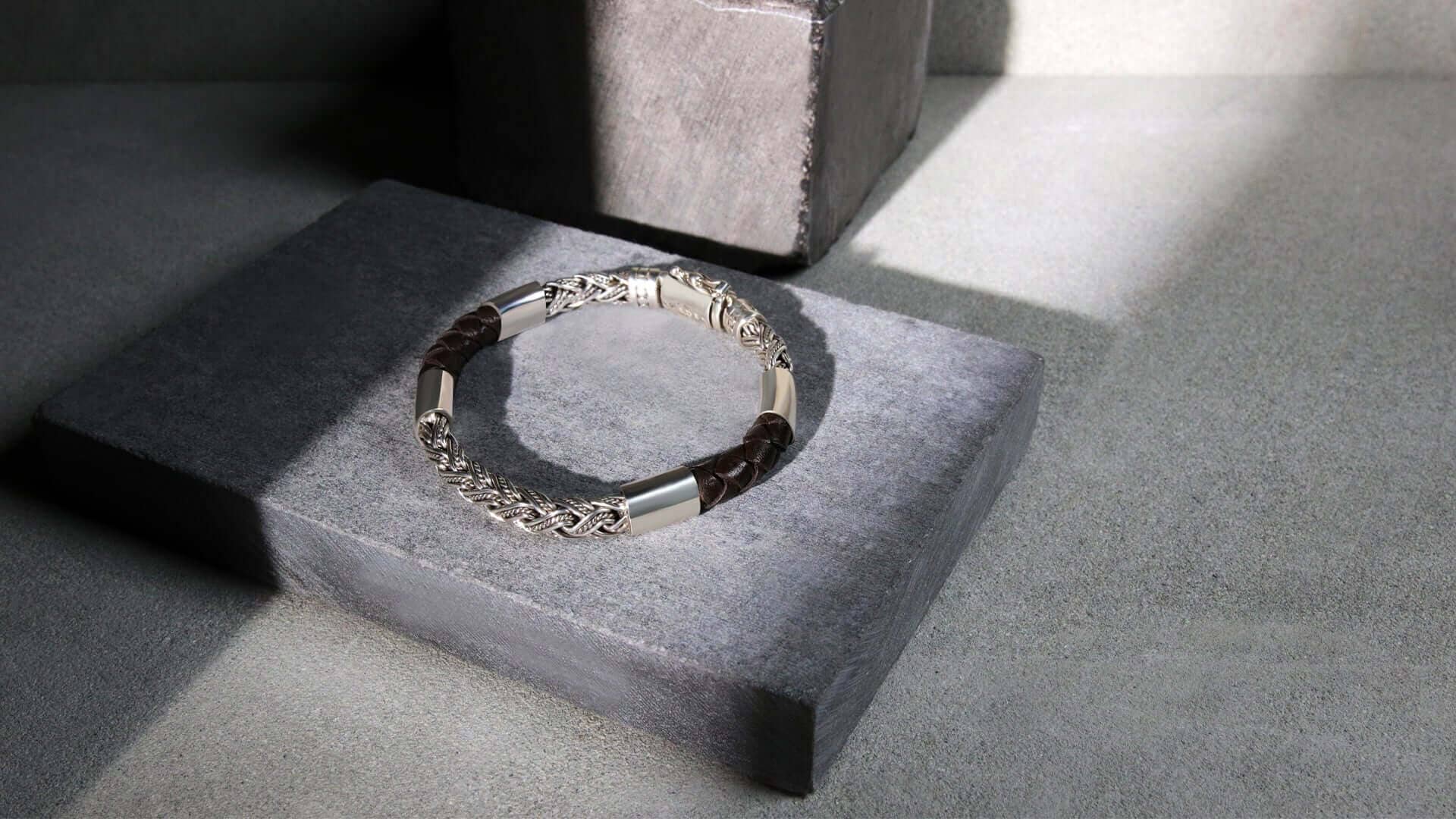
Viking Bracelet Meaning: Journey into the World of Ancient Norse Jewelry
Table of Contents
- Introduction
- What is a Viking and What Ended the Viking Age?
- What Did a Viking Look Like?
- The Symbolism of Ancient Viking Jewelry
- What Kind of Jewelry Did the Vikings Wear?
- What is Norse Jewelry Made Of?
- Viking Bracelets Designs and What do they Symbolize?
- Where Can I Purchase Viking Jewelry with Modern Design?
Introduction
Back in the day, Vikings roamed the seas and lived a life full of adventures, battles, and conquests. They were fierce warriors, but they were also fashion-forward! Historical evidence indicates that the Vikings were not only renowned for their exploration and poetic talents but also possessed a highly sophisticated society with a profound appreciation for the arts.
When they weren't engaged in voyages of discovery, the Vikings excelled in the crafts of woodworking and metalwork. They were skilled artisans who crafted exquisite jewelry and displayed a deep passion for the creation and appreciation of art.
Vikings loved their jewelry, and they wore it with pride. In this blog post, we'll take a look at the fascinating history and meanings behind Viking jewelry, explore Viking bracelets, and their intriguing symbolism, and where to find genuine Viking jewelry today.
What is a Viking and What Ended the Viking Age?
Let's start with the basics: the Vikings, hailing from the Scandinavian regions of Norway, Denmark, and Sweden, were seafaring people who thrived from the late 8th to the early 11th centuries (the Viking Age).
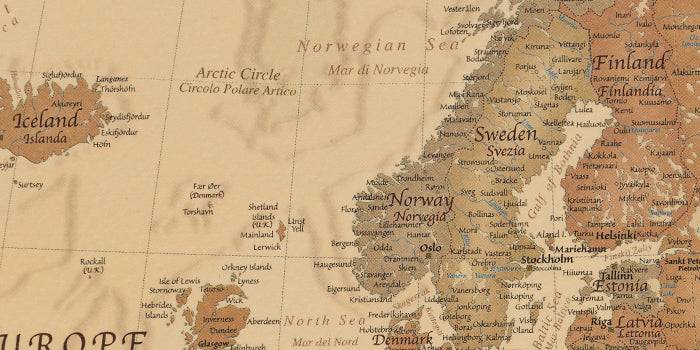
The word "Viking" comes from the Old Norse word "Vik," which means bay or inlet. "Vikings" means pirate or raider. Renowned for their exceptional navigation skills, they embarked on daring voyages that left a lasting imprint on European history. These formidable warriors, traders, and explorers played a significant role during the Viking Age.
Throughout this era, the Norse seafarers undertook extensive raids, trading expeditions, and ambitious explorations across Europe, the North Atlantic, and even as far as the Middle East. The Viking Age eventually drew to a close with the Norman Conquest of England in 1066.
What Did a Viking Look Like?
Vikings shared physical traits with other Northern European populations of their time.
They had fair to light skin, varied hair colors (blonde, red, brown), and predominantly blue or gray eyes.
Facial hair, particularly well-groomed beards, held cultural significance. Hairstyles varied, with some Vikings wearing long hair and others opting for braids or tied-back styles.
Their clothing, made of wool or linen, included tunics, trousers, cloaks, and belts with metal buckles. In colder climates, they added fur or leather garments for warmth.
Clothing from the Maritime Museum exhibition JC Merriman, CC BY 2.0, via Wikimedia Commons
The Symbolism of Ancient Viking Jewelry
Viking jewelry held deep significance beyond mere adornment and accessories, serving as a means of identification within tribes. It conveyed status, profession, and familial ties.
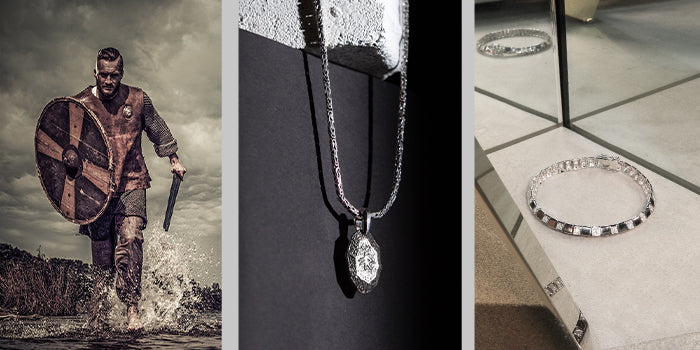
Women adorned themselves with jewelry, using it to fasten their clothes and express their personal style. Leaders and chiefs showcased their wealth and prowess through lavish jewelry. These meaningful pieces embodied bravery, strength, and nobility.
Viking jewelry incorporated symbols and inspirations from their polytheistic religion, daily life, animals, and nature. Both men and women embraced a wide range of jewelry, adding a touch of glamour to their seemingly dark world.
Gifts from tribal chiefs symbolized strong relationships. In the world of Vikings, alliances were vital. Lords and warriors solidified their loyalty through ring exchanges. Wealthy lords distributed precious metal rings to warriors, symbolizing gratitude and wealth redistribution.
Viking finger ring, silver The Portable Antiquities Scheme/ The Trustees of the British Museum, CC BY-SA 2.0, via Wikimedia Commons
Notably, Norse ornaments held dual purposes, serving as currency in trade, which explains the Vikings' affinity for jewelry crafted from precious metals.
What Kind of Jewelry Did the Vikings Wear?
The Vikings had a penchant for flaunting their love for jewelry. From head to toe, they adorned themselves with various types of accessories, favoring silver and bronze as their metals of choice, with gold reserved for the elite. Jewelry served as a clear indicator of social status and position within the Viking hierarchy.
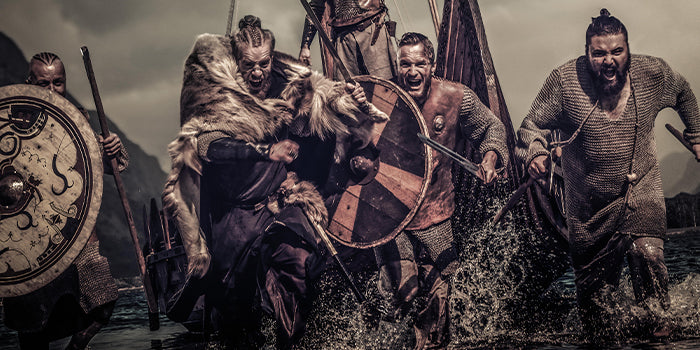
Bronze brooches and armbands were popular among women, while earrings held less prominence, women fastened their garments with brooches and wore necklaces, while men sported rings on their fingers, wrists, arms, and necks. Warriors embellished their weapons, particularly the sword hilts.
The Viking design philosophy was distinct, incorporating symbols like the Runic alphabet, the Tree of Life, hammers, triangles, and horns, each carrying mystical significance in Norse mythology. Animals also played a significant role in Viking jewelry design.
What is Norse Jewelry Made Of?
Vikings had a strong preference for silver, even though gold was considered the more precious metal. Since there were no natural deposits of these metals in Scandinavia, Vikings had to source them through raids, conquests, or trades. Viking-based jewelry has expanded to include bronze, glass, and brass.
Filigree and Repoussé were the two primary methods in Viking jewelry making. They used patterns of nature and animals in the early phases, but they also included simplistic geometric patterns later on. They also wore beads made from precious stones and rocks, but not in combination with their silver pieces.
The gold plate has filigree decoration and was probably originally attached to a brooch | The Swedish History Museum, Stockholm from Sweden, CC BY 2.0, via Wikimedia Commons
Viking bracelets often incorporated knotwork patterns and runic symbols. Knotwork represented interconnectedness and was a significant feature in Viking art, while runes held symbolic and mystical meanings.
Leather was another material used to make Viking cord bracelets. They were crafted by braiding or weaving leather cords together, creating a durable and stylish accessory.
Viking Bracelets Designs and What do they Symbolize?
Out of all Viking jewelry, bracelets were essential and represented someone on the rise. They were a symbol of someone who achieved something remarkable or glorious, distinguishing them from others.
Among many types of Viking jewelry, bracelets are the only ones on the rise in the Viking jewelry world. The Viking bracelet held more significance than just an accessory. It was an icon, an identification, and a glory to a man who achieved something special, unique, and challenging.
-
Viking Arm Rings/Cord Bracelets:
Viking arm rings, also known as armrings, were circular or spiral-shaped bracelets worn around the upper arm. They were often made of metal and could be plain or intricately decorated. Viking chiefs would sometimes give pieces of their arm rings as rewards.
 Nationalmuseet CC BY-SA 4.0 via Wikimedia Commons
Nationalmuseet CC BY-SA 4.0 via Wikimedia Commons
-
Viking Torc Bracelets:
The Viking Torc Bracelet, a striking Celtic jewelry piece dating back to 1200 BC, held immense significance. It symbolized the wearer's esteemed status within their tribe and was often accompanied by other rings like armbands and wristbands.
Crafted from precious metals such as gold or silver, these Torc bracelets were not only fashion statements but also indicators of social standing. They featured intricate designs or simple forms and even served as a form of currency.
Adorned in braided or twisted patterns, these bracelets were both decorative and meaningful. Viking chiefs bestowed Viking Torc Bracelets as rewards or gifts, underscoring their importance and prestige.
The Portable Antiquities Scheme/ The Trustees of the British Museum
-
Viking Animal Bracelets
In Norse mythology, animals played a crucial role and were seen as powerful beings with unique characteristics and attributes. Viking bracelets often featured symbols of animals, which held significant meaning within Norse culture. These symbols represented various concepts, virtues, or gods associated with specific animals.
Wolves: Wolves were associated with strength, cunning, and loyalty. They were connected to the god Odin and his wolves, Geri and Freki. Viking warriors often wore wolf symbols to invoke these qualities.
Ravens: Ravens were linked to the god Odin as well. They symbolized wisdom, knowledge, and the ability to see beyond the present. Ravens were believed to bring Odin information from the earthly realm.
Bears: Bears were seen as symbols of courage, protection, and brute strength. They were often associated with the warrior aspect of Viking culture and were regarded as fierce and powerful animals.
Dragons: Although dragons are not native to Norse mythology, they gained popularity in Viking art and symbolism. Dragons were often depicted as serpentine creatures with wings, symbolizing power, wisdom, and protection. The dragon was often used on the heads of the Viking ships. It was believed to bring good luck and courage to warriors on their journeys of conquest.
Cats: Cats, particularly associated with the goddess Freya, symbolized fertility, independence, and grace. They were revered for their connection to love and sensuality.
-
Viking Link Bracelets
Link bracelets were also popular among Vikings. They were made of metal links connected together, forming a chain-like bracelet. These bracelets could feature different designs and were worn as decorative jewelry.
-
Leather Bracelets/Braided Bracelets
Leather bracelets were another type of Viking bracelet. They were made from leather and often adorned with metal accents or engraved designs. Leather bracelets were durable and could be personalized with symbolic plates. Viking braided bracelets were made by weaving cords or leather strips together to create a decorative pattern. These bracelets often featured intricate knotwork designs.
-
Viking Bracelets Featured Norse Symbols
Viking bracelets were not only fashionable but also carried spiritual and mythological meanings. Some bracelets featured intricate patterns or engravings. These symbols represented the power, protection, and blessings of the Norse gods, often associated with deities like Thor, Odin, Freya, and Frigga, adorned with metal accents or ancient Norse symbols, added an element of magic and fortune-telling to these bracelets.
-
Viking Oath Bracelet
In the Viking Age, oaths were considered sacred and binding, and keeping one's word was a matter of honor. Even at the cost of one's own life, Vikings would stay true to their promises. The Viking Oath Bracelet serves as a daily reminder of the importance of keeping one's promises and living with integrity. It's a symbolic accessory that represents the strength and courage required to fulfill one's commitments.
In Viking culture, the meaning of a bracelet was often tied to its design. Different symbols and elements were believed to bestow specific powers to the wearer, especially for warriors during battles and raids. For example, the rune alphabet was often used in designs and originated from Norse white magic, providing protection and blessings during the war. The Mjolnir, or Thor's hammer, symbolized power and protection, serving as an amulet.
While different bracelets may imbue various properties, they all share a common goal: ensuring the wearer's safe return home with victory after battle. In our current challenging times, wearing Viking jewelry with strong mystical protection can imbue the wearer with powerful Norse white magic, warding off evils and negativity to ensure a safe return home to their families. These pieces can serve as a symbol of strength and protection during difficult times, reminding us of the resilience and bravery of Viking warriors.
Where Can I Purchase Viking Jewelry with Modern Design?
If you're interested in wearing Viking jewelry, check out AWNL Jewelry. We are a Swedish brand dedicated to creating modern talismans. Our passion for Viking and Norse culture has led us to create a unique line of talismans that captures the spirit of adventure and exploration of the Viking Age.

Explore our curated Norse Treasure selection
Our designs based on Norse mythology range from necklaces to bracelets and each piece is crafted with the utmost care and attention to detail.

Drawing inspiration from Swedish design, we incorporate the rune alphabet and Norse symbols with exquisite craftsmanship to create truly one-of-a-kind pieces. The result is a collection of masculine, rugged, and avant-garde jewelry that pays homage to the Viking era.

Explore our curated Runes selection
Whether you're looking to make a statement or simply express your love for Viking history, our jewelry offers a unique way to connect with the past and embrace the present.


